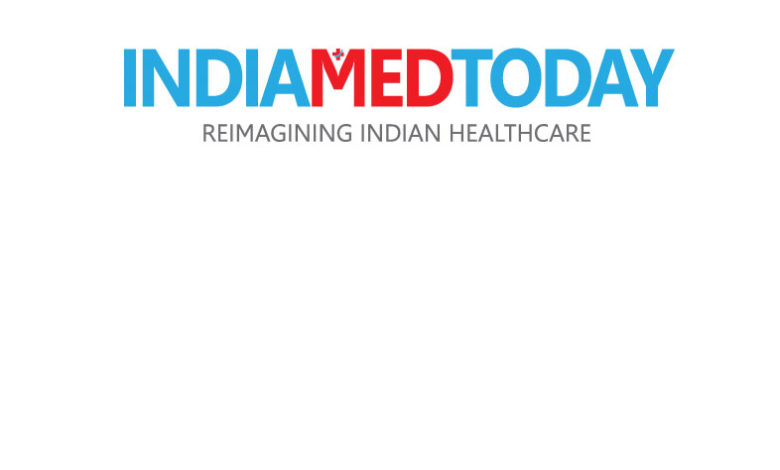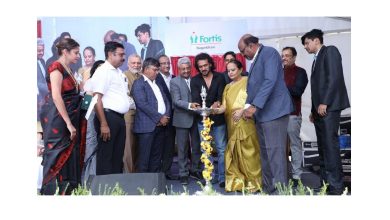Dr Harsh Vardhan reviews launch of Jan-Andolan against TB

The health minister outlined the various steps taken by the Government of India under the National Tuberculosis Elimination Programme
Dr Harsh Vardhan, Union Minister of Health and Family Welfare chaired a high-level meeting with senior officials of the Union Health Ministry and other Development Partners to launch a Jan-Andolan against Tuberculosis involving Advocacy, Communication and Social Mobilization (ACSM).
At the outset, Dr Harsh Vardhan outlined the various steps taken by the Government of India under the National Tuberculosis Elimination Programme (NTEP) in combating the disease of TB which were backed by bold commitments of both affirmative action and resources.
“We wish to make 2021 the year of tuberculosis,” stated the Minister as he outlined the tremendous progress in ensuring all patients, irrespective of where they seek care, received free-of-cost, high-quality TB care in the last few years and expressed his confidence that these gains would feed into creating greater demand for services, de-stigmatise the disease and help realise the goal of a TB-free India by 2025.
Underscoring the importance of newer approaches to tackle the disease holistically and the need for accelerated and sustained focus to achieve the target of a TB Free India, the Minister said, “While the National Tuberculosis Elimination Programme continues to augment efforts to further strengthen TB management and service delivery, it is only when the wider population uses the essence of democracy and the spirit of Jan Andolan through the generation of awareness, encouragement of health care seeking behaviour within their communities, and de-stigmatisation of TB, would the movement against the disease be a success.”
He highlighted the importance of reaching the maximum population quickly, ensuring full participation and cooperation of communities and community-based groups in various stages of TB response as the foundational pillars of his brainchild movement.
Drawing inspiration from lessons in COVID-19 management, where India has not only successfully dealt with the pandemic, but emerged as a beacon of hope with the world looking up to India for solutions, diagnostics, and vaccines, Dr Vardhan said, “The pandemic has brought the focus back on the role of focussed and rigorous messaging in creating an appetite for accurate information and appropriate behaviours and hygiene practices. Similar nation-wide messaging on TB symptoms can drive notification levels up and build awareness on the precautionary behaviour related to control of TB infection in the country.”
He recollected steps taken by him as Delhi’s Health Minister in generating awareness against Polio which involved the participation of neighbourhood chemist shops.
He chaired deliberations on a National Technical Support Unit (NTSU) that is proposed to be set up in collaboration with development partners to support the Government of India’s efforts, both nationally and in states, to help strengthen on-ground program delivery by employing various advocacy and communications approach to generate demand and create awareness on the services available under the TB programme.
Development partners working with the TB programme attending the event communicated the impact of their work in the past few years and shared their plans to support the proposed Jan Andolan movement.
Rajesh Bhushan, Union Health Secretary, Arti Ahuja, Additional Secretary (Health), Dr Sunil Kumar, DGHS and other senior officials of the Ministry were present. Dr Roderico Ofrin, Country Representative, India (WHO)and representatives of Development Partners like BMGF and USAID were present at the event.
Says, Rohitashwa Prasad, Partner, J Sagar Associates, “The PLI scheme for the pharma sector follows the ones announced in July 2020 for APIs, KSMs and medical devices. It is thus one more step towards the objective of developing self-reliance and self-sufficiency in the healthcare sector in India. On a first read of the scheme, it seems to have avoided the challenges and issues that the industry faced with the July 2020 schemes, such as, limiting eligibility on the basis of the net worth of the applicants and not extending it to brownfield projects. This scheme, with applicants and incentives divided on the basis of global manufacturing revenue, is a simple and clear objective. Having said that, the objectives of the scheme are quite expansive and ambitious, and it remains to be seen as to what extent these will be achievable. For example, there may not be a straightforward inverse correlation between the manufacturing incentives and the prices of patented drugs manufactured by big foreign players even if they start manufacturing in India. In any event, since the GoI has only recently started its PLI schemes in various sectors, one can only expect to start seeing (and evaluating) the outcomes in a couple of years.”




